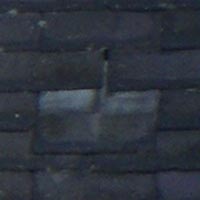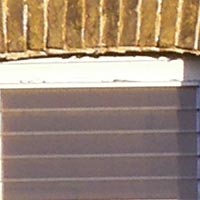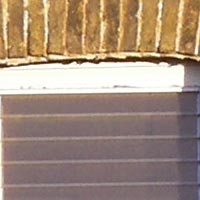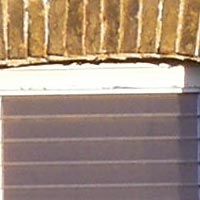Pentax Optio Z10 Review
Review Date: November 19th 2007
Author: Mark Goldstein
Leave a comment about this Review
|
Image Quality
All of the sample images in this Review were taken using the 8M Best mode, which gives an average image size of around 3Mb.
Noise
There are 6 ISO settings available on the Pentax Optio Z10 which you can select at any time if the camera is in the normal shooting mode. There is no discernible noise at the slowest settings of ISO 64 and 100, as you would expect, but noise is unfortunately already starting to appear at ISO 200. There is obvious noise at ISO 400, and by ISO 800 it is very obvious indeed, together with blurring of detail. The ISO 1600 and 3200 settings are virtually unusable, looking good on the spec sheet, but terrible in reality. Here are some 100% crops which show the noise levels for each ISO setting:
ISO 64 (100% Crop) |
ISO 100 (100% Crop) |
 |
 |
ISO 200 (100% Crop) |
ISO 400 (100% Crop) |
 |
 |
ISO 800 (100% Crop) |
ISO 1600 (100% Crop) |
 |
 |
ISO 3200 (100% Crop) |
|
 |
|
Sharpening
Here are two 100% crops which have been Saved as Web - Quality 50 in Photoshop. The right-hand image has had some sharpening applied in Photoshop. The out-of-the camera images are a little soft at the default sharpening setting. Alternatively you can change the in-camera sharpening level if you don't like the default look.
Original
(100% Crop)
|
Sharpened (100% Crop) |
 |
 |
 |
 |
File Quality
The Pentax Optio Z10 has 3 different image quality settings available, with Best being the highest quality option. Here are some 100% crops which show the quality of the various options, with the file size shown in brackets.
|
8M
Best (2.91Mb) (100% Crop)
|
8M
Better (1.68Mb)
(100% Crop)
|
 |
 |
|
8M
Good (1.20Mb) (100% Crop)
|
|
 |
|
Chromatic Aberrations
The Pentax Optio Z10 did suffer from chromatic aberrations during the review, but it was generally well controlled. Limited purple fringing was mainly present around the edges of objects in high-contrast situations, as shown in the examples below.
|
Example
1 (100% Crop)
|
Example
2 (100% Crop)
|
 |
 |
Macro
The Pentax Optio Z10 offers a Macro setting that allows you to focus on a subject that is 8cms away from the camera when the lens is set to wide-angle. The first image shows how close you can get to the subject (in this case a compact flash card). The second image is a 100% crop.
|
Macro Shot |
Macro Shot (100% Crop) |
 |
 |
Flash
The flash settings on the Pentax Optio Z10 are Auto, Flash On, Flash Off, Auto + Red-Eye, Flash On + Red-Eye and Soft Flash. These shots of a white coloured wall were taken at a distance of 1.5m.
|
Flash Off - Wide Angle (38mm) |
Auto Flash - Wide Angle (38mm) |
 |
 |
|
Flash Off - Telephoto (200mm) |
Auto Flash - Telephoto (200mm) |
 |
 |
And here are some portrait shots. As you can see, the Flash On setting caused quite a lot of rede-eye, and the Flash On + Red-Eye option almost removed it.
|
Flash On |
Flash On (100% Crop) |
 |
 |
|
Flash On + Red-Eye |
Flash On + Red-Eye (100% Crop) |
 |
 |
Night Shot
The Pentax Optio Z10's maximum shutter speed is 4 seconds, which is not great news if you're seriously interested in night photography. The shot below was taken using a shutter speed of 4 seconds, aperture of f/3.5 at ISO 64. I've included a 100% crop of the image to show what the quality is like.
|
Night Shot |
Night Shot (100% Crop) |
 |
 |
Overall Image Quality
The Pentax Optio Z10's image quality is below average. The camera's main drawback is noisy images, with the relatively slow speed of ISO 200 showing some noise and blurring of detail. The noise gets progressively worse as you go from ISO 400 to ISO 800 and finally to the completely unusable 1600 and 3200 settings. The Pentax Optio Z10 handled chromatic aberrations quite well with limited purple fringing effects appearing only in high contrast situations. The 8 megapixel images were just a little soft straight out of the camera at the default sharpen setting, and either require some further sharpening in an application like Adobe Photoshop, or you could increase the in-camera sharpening level. The night photograph looked good, although the maximum shutter speed of 4 seconds does limit what you can achieve after dark. Macro performance is not brilliant, allowing you to focus only as close as 8cms away from the subject. The built-in flash worked well indoors, with limited red-eye and accurate overall exposure. Overall, something of a mixed performance by the Pentax Optio Z10.
|
![]() PhotographyBLOG
is a member of the DIWA
organisation. Our test results for the Pentax Optio Z10 have been submitted to DIWA
for comparison with test results for different samples of
the same camera model supplied by other DIWA
member sites.
PhotographyBLOG
is a member of the DIWA
organisation. Our test results for the Pentax Optio Z10 have been submitted to DIWA
for comparison with test results for different samples of
the same camera model supplied by other DIWA
member sites.
